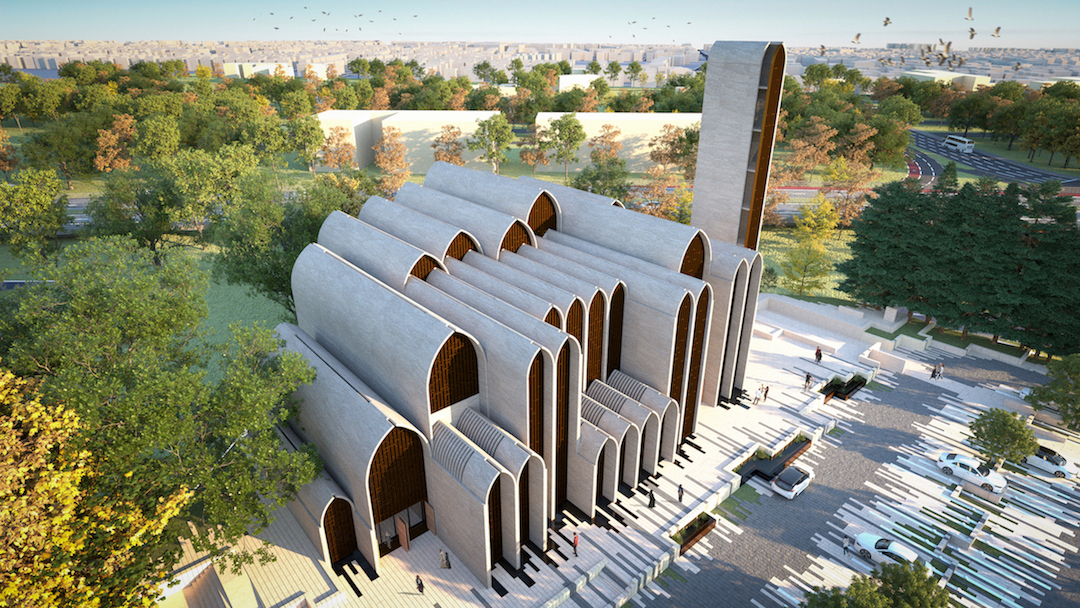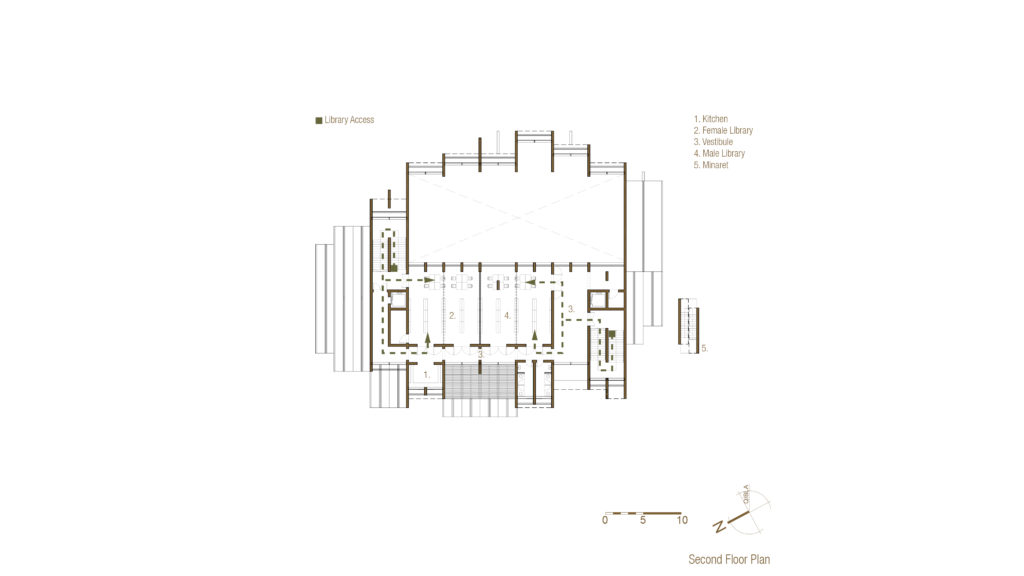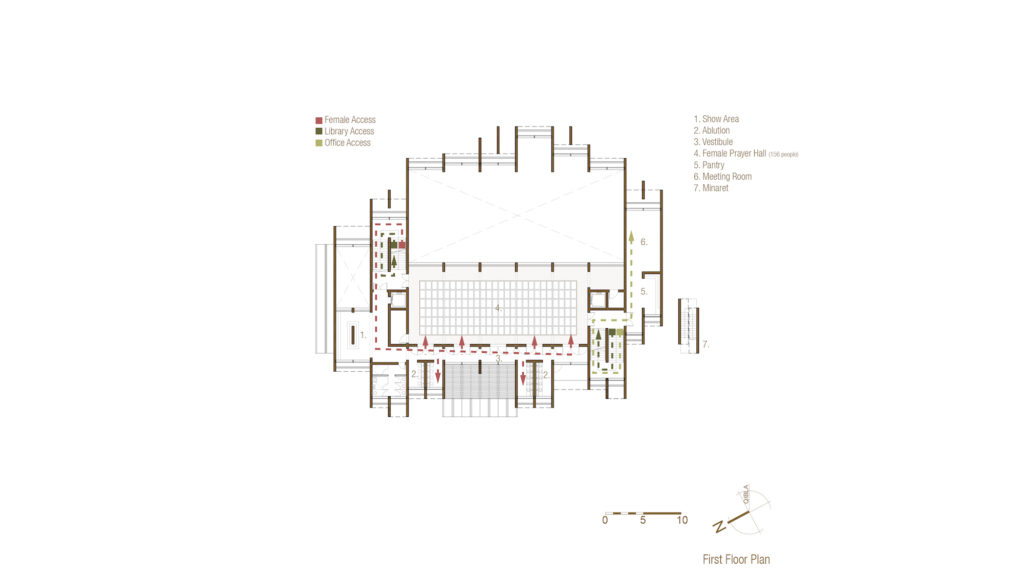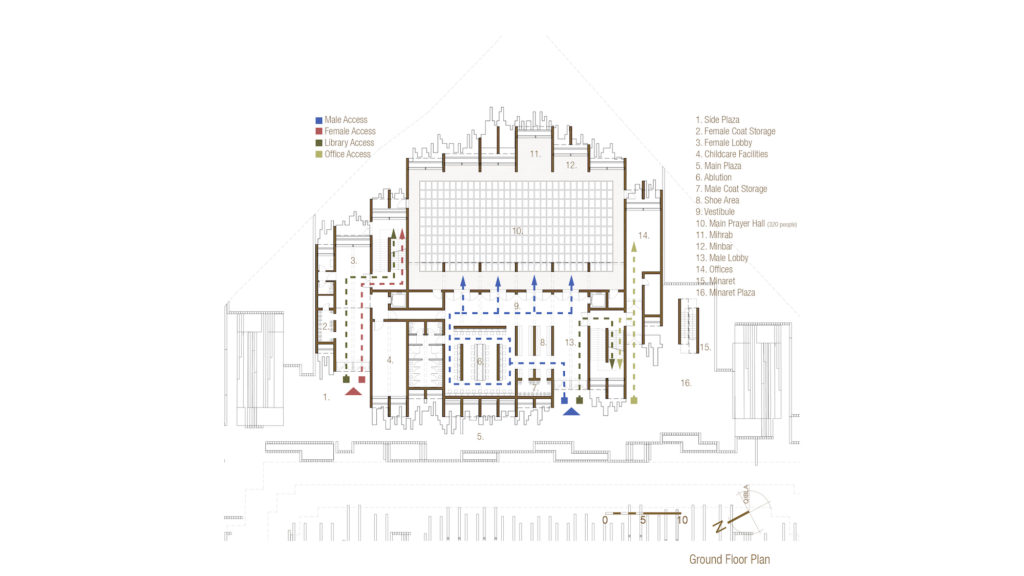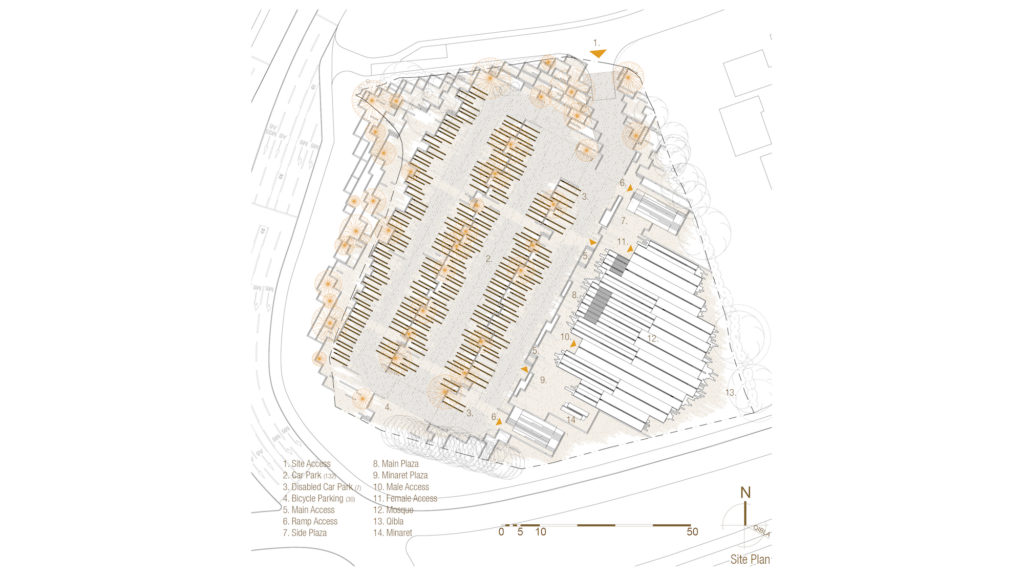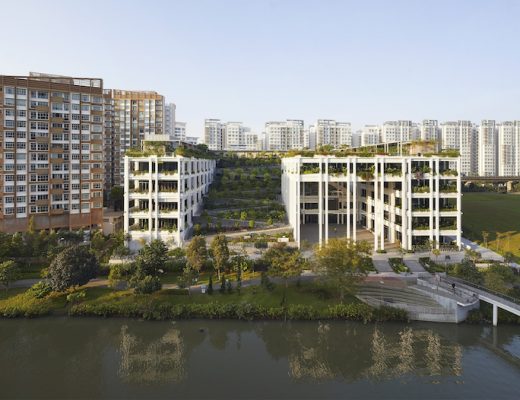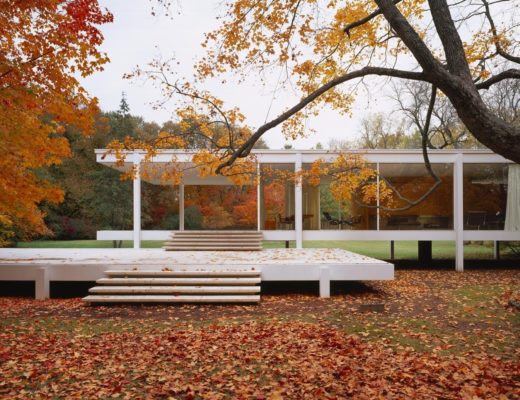The task of designing a place of worship, regardless of the faith, is a phenomenal challenge for any architect. For the Mexico-and UK-based multidisciplinary practice, AIDIA Studio, such a project prompted the team to undertake an extensive research and deep journey into the history of humanity, the evolution of religion, the rise of Islam, its proliferation around the world along with the vast examples of architectural expressions that have become intertwined with local architectural styles.
“Beyond our fascination with the architecture of mosques, we cherish the opportunity to contribute to a new age of Islam in the U.K., a new age of inclusiveness, tolerance, and dignity and we truly believe that there is no better vehicle to drive that effort of dignity and acceptance than contemporary architecture with its ability to materialising ideals into innovative physical spaces,” says the team, referencing its latest project – a contemporary mosque for the city of Preston in Lancashire in northern England.
Site -The Rite of Ascending

AIDIA Studio’s approach places the mosque at the highest point on the site. In doing so, apart from cultivating the symbolic gesture of the ascendance, the team was able to define a journey which starts in the landscape, continues through the main access, cloak room and ablution and culminates in the prayer room. It seems appropriate that this ceremonial hall, be the most guarded space of the complex, at the highest point on the site and shielded away from the cars.
Qibla -Everything in Alignment

The team embraced the requirement to orientate the mosque towards Mecca by extending this axis across the site into a design grid where all elements, architectural, structural and landscape are aligned in a holistic manner. This 4.8m grid provides a suitable framework for laying out the carpark and the pillars supporting the mosque’s vaults.
A Fractal System of Pointed-Arch Vaults
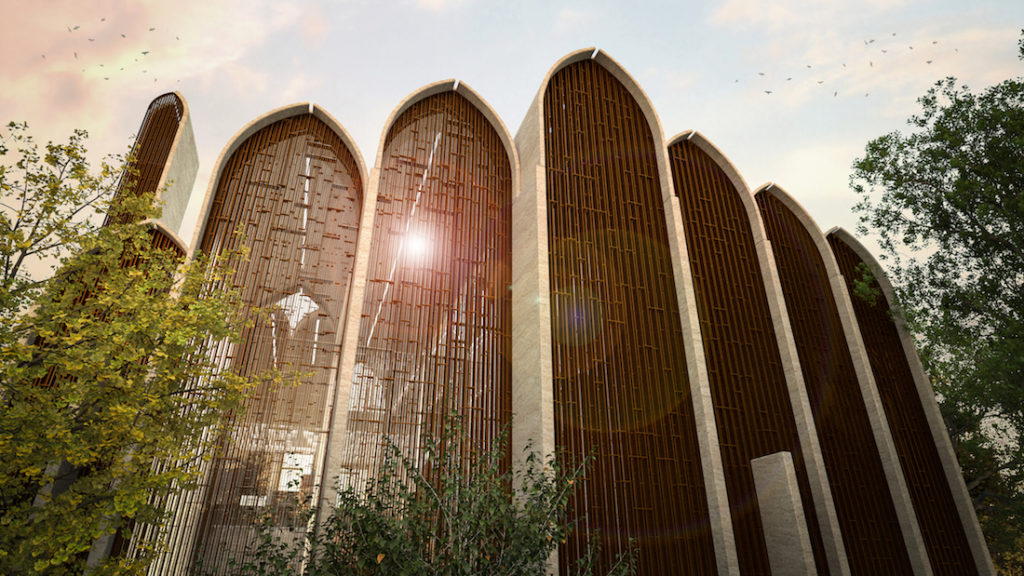
One of the highlights of the form of the mosque is the quintessential archetype of Islamic Architecture, the pointed arch. This centuries-old building feature traces its origins in Persia and India before making its way into Europe through Muslim immigrants where it was quickly embraced across cultures during the gothic period. The pointed arch is structurally much more efficient than the rounded arch, and when turned into a vault it is able to span large distances clearing the floorplan from columns and other heavy load-bearing elements. AIDIA Studio has devised a vault system of fractals which negotiate, subdivide and adapt to specific programmatic requirements. These vaults could be constructed out of reinforced ground natural stone or could also be cast in glass fibre reinforced concrete (GRC). By being a modular system, they would be able to be manufactured in series locally or regionally.
Parking as Landscape
Possibly one of the biggest challenges we faced was to design a carpark which doesn’t resemble one. Our approach aims to blur the boundary between parking and landscaping, and we do so by establishing a playful array of shifting slates, plates, and benches. We draw our inspiration from the Islamic gardens which are characterised by an intricate play of geometric patterns on multiple levels targeting the human senses through water features, fields of flowers, singing birds and shading elements. Along the edge of the site, a cascading array of planters blend with the surroundings.
Building Flow, An Intuitive Journey
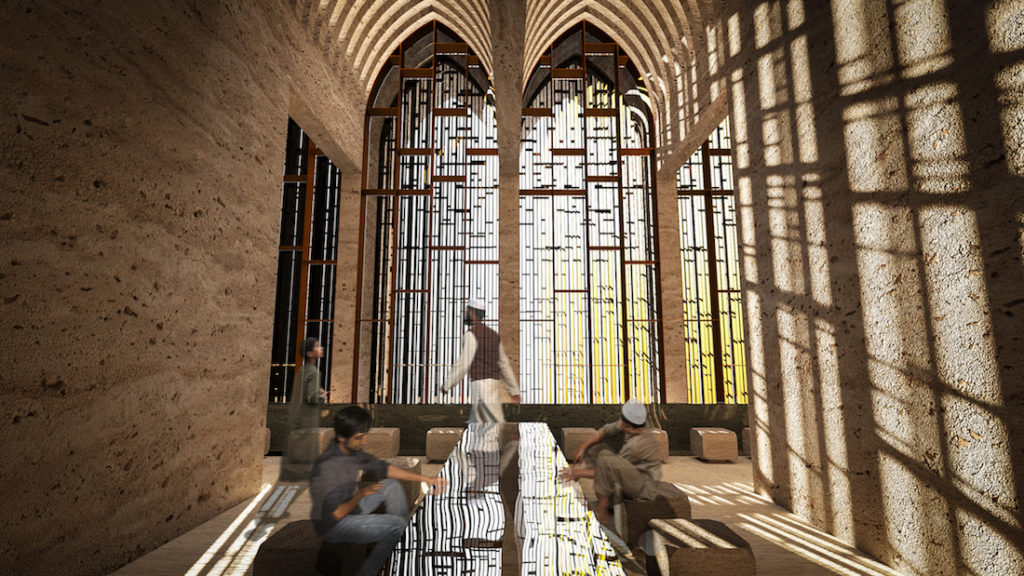
One of the most fascinating aspects of Mosque design, is the materialisation of a ritual into a significant ceremonial experience. The design of New Preston Mosque aims to provide an effortless intuitive, sequential flow from the time the user enters the building, checks-in their coat and umbrella, removes their shoes, proceeds to cleansing and finally entering the prayer hall. The design creates a linear flow where paths of clean and dirty don’t overlap.
Ablution Rooms, Honouring the Ritual
In designing the ablution, the team has gone beyond the pragmatism of the washing requirement by rescuing the beauty and ritualistic significance of the cleansing. In this space, the sound of running water from a centralised fountain fills the space and produces a confluence of sunlight and water, imparting a lightness to the space.
Mashrabiyas, breaking the light
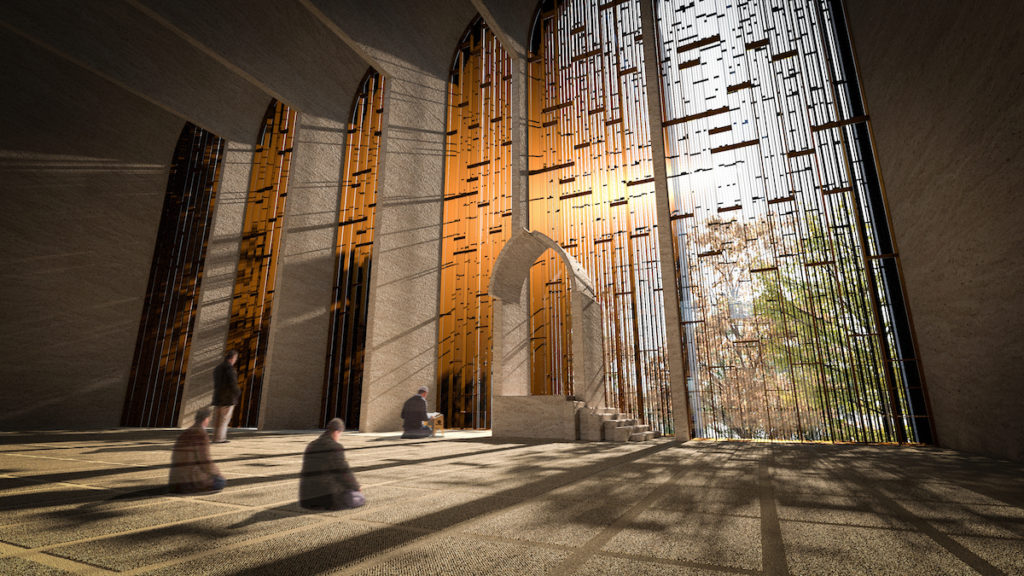
Perhaps the most poetic of all Islamic architectural archetypes, the mashrabiya filters the light and sets the stage for a dimmed ceremonial atmosphere. The team has designed a pattern which reinforces the fractal linearity of the overall scheme. The mashrabiya cassettes, intended to be casted bronze, close the vaults along the NW-SE axis creating a kinetic play of lights and shadows across all three levels of the mosque.
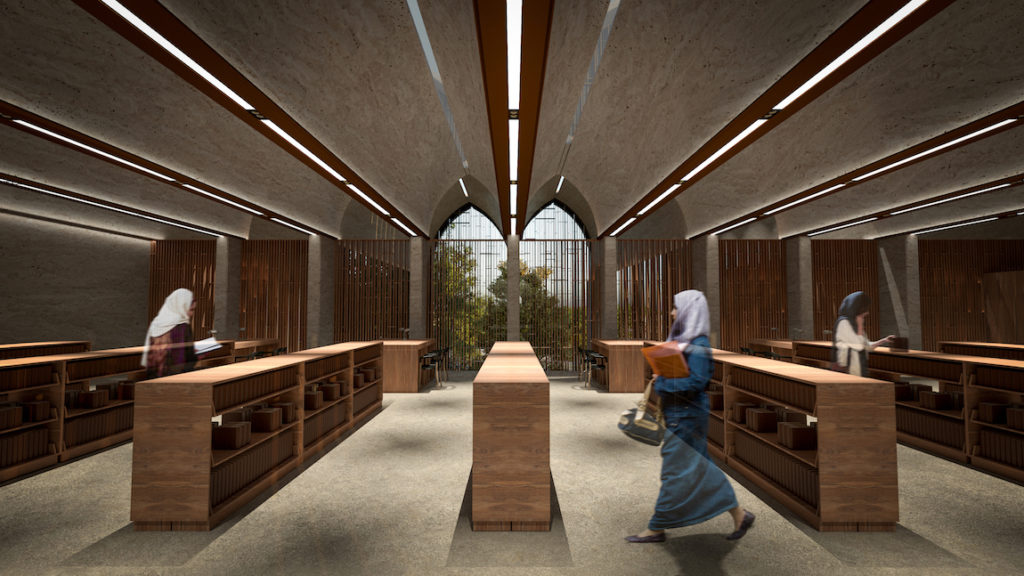
Minaret, A Beacon for Preston
Apart from diffusing the call to prayer, the minaret works as an observation point of Preston. At 32m tall, it will be visible from the near periphery and all major approaching roads. The aim is to make it a distinctive element and a landmark for Preston, and introduce a new shared space for the local community.
Project details:
Area: 1,800m2
Minaret Height: 32m
Building Materials: Natural Stone Cladding, Casted Bronze Mashrabiyas, Granite Stone Tiles
Project Team:
Lead Architects: Rolando Rodriguez-Leal, Natalia Wrzask
Project Team: Emilio Vásquez Hoppenstedt, Rodrigo Wulf Sánchez
Visuals and Drawings: AIDIA STUDIO
You might also like:
Aidia Studio to design 25 luxury pods with collapsible shells in Abu Dhabi’s Empty Quarter desert
22 Contemporary Mosques Around The World That Redefine Sacral Architecture With Respect

